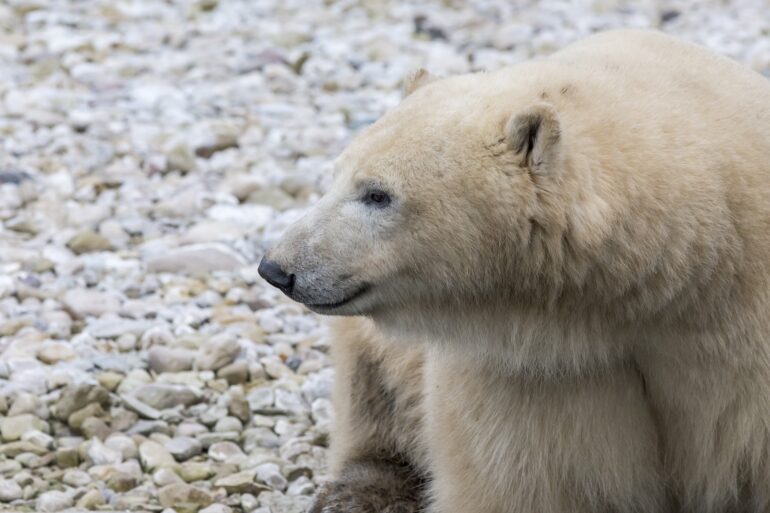TL;DR:
- Churchill, Canada, known as the “Polar Bear Capital of the World,” is embracing new coexistence strategies.
- Polar bear behavior is changing due to the climate crisis, bringing them closer to human communities.
- Indigenous communities like Cree are seeking ways to deter bears without harming them.
- Innovative technologies, including AI-based “Bear-dar” and satellite tracking, are aiding in coexistence efforts.
- Waste management has proven effective in reducing polar bear encounters.
- Preserving polar bears is crucial, as they are listed as vulnerable, and population declines are observed.
Main AI News:
In the realm of Canada’s polar bear habitat, a delicate dance between wildlife and human communities has taken center stage. Churchill, nestled on the shores of Hudson Bay in Manitoba, Canada, proudly bears the title of “Polar Bear Capital of the World.” However, the tactics for coexisting with these magnificent creatures have evolved dramatically.
Churchill’s Mayor, Mike Spence, hails from the Indigenous Cree community and played a pivotal role in establishing the Polar Bear Smart Working Group in 2019. The town sought assistance from the nonprofit organization Polar Bear International (PBI) to devise coexistence strategies. “We’ve had a busy summer,” notes Spence. “Any time the bears come off the ice, around July and August, there are bears coming through. We had 50 to 100 calls from August to October.”
The shifting climate crisis has forced polar bears to adapt their behavior, bringing them closer to human settlements. The dwindling sea ice, essential for their hunting, compels these majestic creatures to venture ashore for more extended periods, resulting in increased proximity to people.
However, even as the bears encroach upon human territories, polar bear attacks on humans remain exceedingly rare, according to Geoff York, Senior Director of Conservation at PBI. The urgency to develop innovative coexistence strategies arises from the rapid and unexpected changes in Arctic conditions, which surpass early climate models’ predictions.
Sam Hunter, representing the Cree community in Peawanuck, underscores the transformation in polar bear behavior. “When I was young, when a bear was sighted, it took off from a long distance,” he reminisces. “These days, polar bears have changed their behavior – they’re no longer scared of people.”
Hunter’s involvement in PBI’s Wapusk Project reflects the concerns of isolated Canadian communities in Peawanuck, Moosonee, and Fort Severn. Residents worry about bears damaging cabins and attempting to enter them while occupied. “Many people don’t understand bears, and this causes bears to be put down. People see them as a threat,” Hunter emphasizes. “Dogs and shotguns are still the best deterrent, but that knowledge needs to be shared with everyone. We need more training not to kill bears. We also need equipment.”
In response, innovative technologies have emerged to foster harmonious coexistence between humans and bears across the Arctic. PBI’s team has developed an AI early-warning radar system known as “Bear-dar” after five years of meticulous work. Geoff York highlights the system’s uniqueness, originally designed to detect humans or military objects on the landscape. However, it currently identifies only 50% to 60% of bears correctly in testing. The goal is to achieve a success rate of 70% to 90% for bear identification.
Moreover, PBI has been instrumental in the creation of “Burr on fur” satellite-tracking devices, designed to attach to bears’ fur, aiding in monitoring their movements to prevent reentry into communities. Plans are also in place to explore new deterrents suitable for polar bears, such as sounds, strobe lights, scents, ‘unwelcome’ mats, and Tasers. Additionally, research is underway to adapt crowd control tools for bears’ safety, including rubber batons and bean bags.
While these technological advancements hold promise, Spence emphasizes the importance of ground-level patrols in Churchill, which remain highly effective. Furthermore, waste management has proven to be a potent strategy, as exemplified in Svalbard, Norway. Landfills that emit enticing odors from discarded food and other items often lure polar bears into communities.
The critical need for coexistence strategies is underscored by the vulnerability of polar bears, which are listed as such by the International Union for Conservation of Nature and recognized as a threatened species under the US Endangered Species Act. The global population of these magnificent creatures dwindles, with some regions witnessing dramatic declines. Thus, efforts to minimize conflicts and garner support from communities living in polar bear habitats are essential for both human and bear preservation, regardless of the climate change trajectory.
Conclusion:
The evolving dynamics between polar bears and human communities in Churchill, Canada, underscore the growing demand for innovative coexistence solutions. The use of cutting-edge technologies, such as AI-based radar systems and satellite tracking, alongside traditional methods, like waste management and patrols, presents opportunities for businesses to enter the market for wildlife management and conservation solutions. As the urgency of preserving polar bears continues to rise, companies offering effective and humane coexistence strategies could find a burgeoning market for their products and services.

